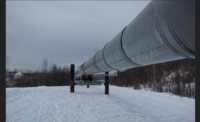Safety tops risk agendas for oil and gas executives
IT security getting special scrutiny

 Oil and gas companies’ health, safety and environment (HSE) remains on top of the industry’s risk agenda according to Business Pulse: Exploring the dual perspectives of the top 10 risks and opportunities in 2013 and beyond, a new report released today by Ernst & Young. The research shows that HSE, regulatory compliance, price volatility and the increasing challenge associated with accessing reserves and markets, are the top risks identified by oil and gas industry executives.
Oil and gas companies’ health, safety and environment (HSE) remains on top of the industry’s risk agenda according to Business Pulse: Exploring the dual perspectives of the top 10 risks and opportunities in 2013 and beyond, a new report released today by Ernst & Young. The research shows that HSE, regulatory compliance, price volatility and the increasing challenge associated with accessing reserves and markets, are the top risks identified by oil and gas industry executives.
Dale Nijoka, Ernst & Young’s Global Oil & Gas Leader, comments: "The oil and gas industry is undergoing an intense focus on safety and environmental risk preparedness and mitigation. In light of corporate social responsibilities, economic challenges and regulatory pressures, it has become increasingly clear that managing these risks is vital for long-term sustainability.”
Cyber attacks and mega-projects
A new entrant into the top 10 risks this year is IT security, and specifically the threat to companies’ operations — or indeed, country and region-wide energy infrastructure — by cyber attacks or cyber theft of their intellectual property. Additionally, another risk now warranting its own category is that of increasing project scale and complexity. As mega-projects become more common, the industry’s record for delivering on time and on budget is under increasing scrutiny.
John Avaldsnes, Ernst & Young’s Global Oil & Gas Advisory Leader adds: “There is a renewed focus on the complete capital project life cycle. Poorly managing these issues reduces the ability to positively affect project performance and value. Aligning operations through performance management is crucial.”
As highlighted by the report, increasing emerging market demand now leads the opportunity ranking, which has moved up three places since our 2011 report. Continued growth of the world’s emerging economies will drive energy demand in these countries, and will increase more opportunities for oil and gas companies to expand in these markets.
Additional new entrants this year in the opportunity ranking list include new infrastructure to gain access to or to connect resources and markets, safety and risk management used as a partnership enabler, and new or expanded markets for natural gas.
Ernst & Young says the top 10 risks and opportunities can be categorized under three themes :
1. Interaction with governments and regulatory bodies
Supply chains in the oil and gas sector are increasingly interconnected and managing them against a backdrop of multiple governments with different and changing policies and regulations provides significant challenges. The sector is also moving quickly into new geographical and technical areas. These create new challenges for governments and short time frames in which to make critical decisions that have some profound, long-term implications for oil and gas companies.
2. Core business focus and counterparty risk management
With the inherent complexity and capital-intensive nature of the oil and gas industry, joint ventures are commonplace, as are multiple, complex supplier relationships. These partnerships are generally fruitful, but carry a number of intrinsic risks.
3. Pace of technological change
Investing in innovation and research and development has risen steadily up the opportunity ranks from sixth position in 2011 to second position in 2013Innovation is necessary for oil and gas companies not just to remain competitive but also because the industry as a whole is undergoing a fundamental shift in focus.
Nijoka concludes: "Technological advancement and regulatory change has never been greater and the need to have a clear view of the risks and opportunities across the oil and gas sector is critical to future success."
Looking for a reprint of this article?
From high-res PDFs to custom plaques, order your copy today!





